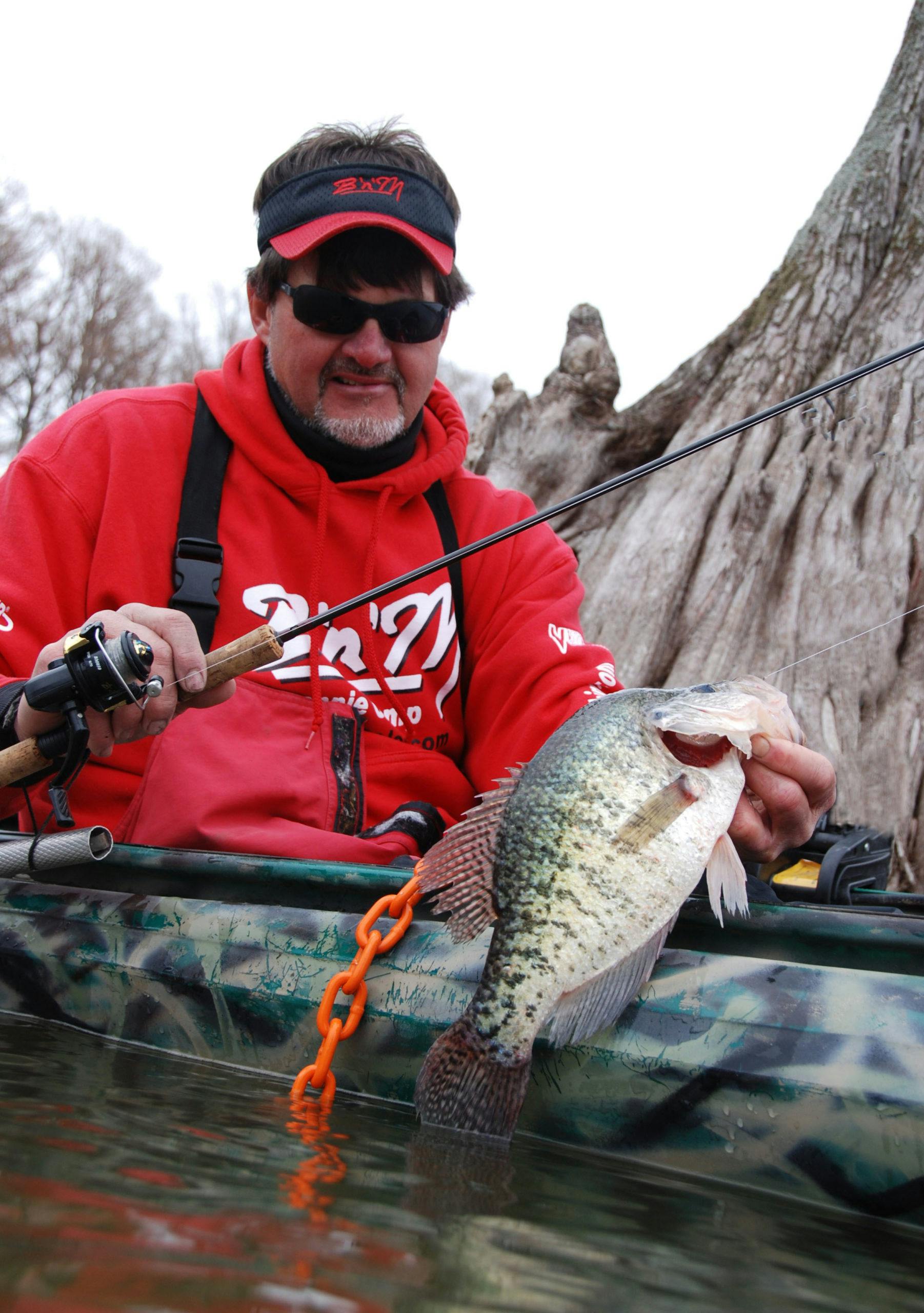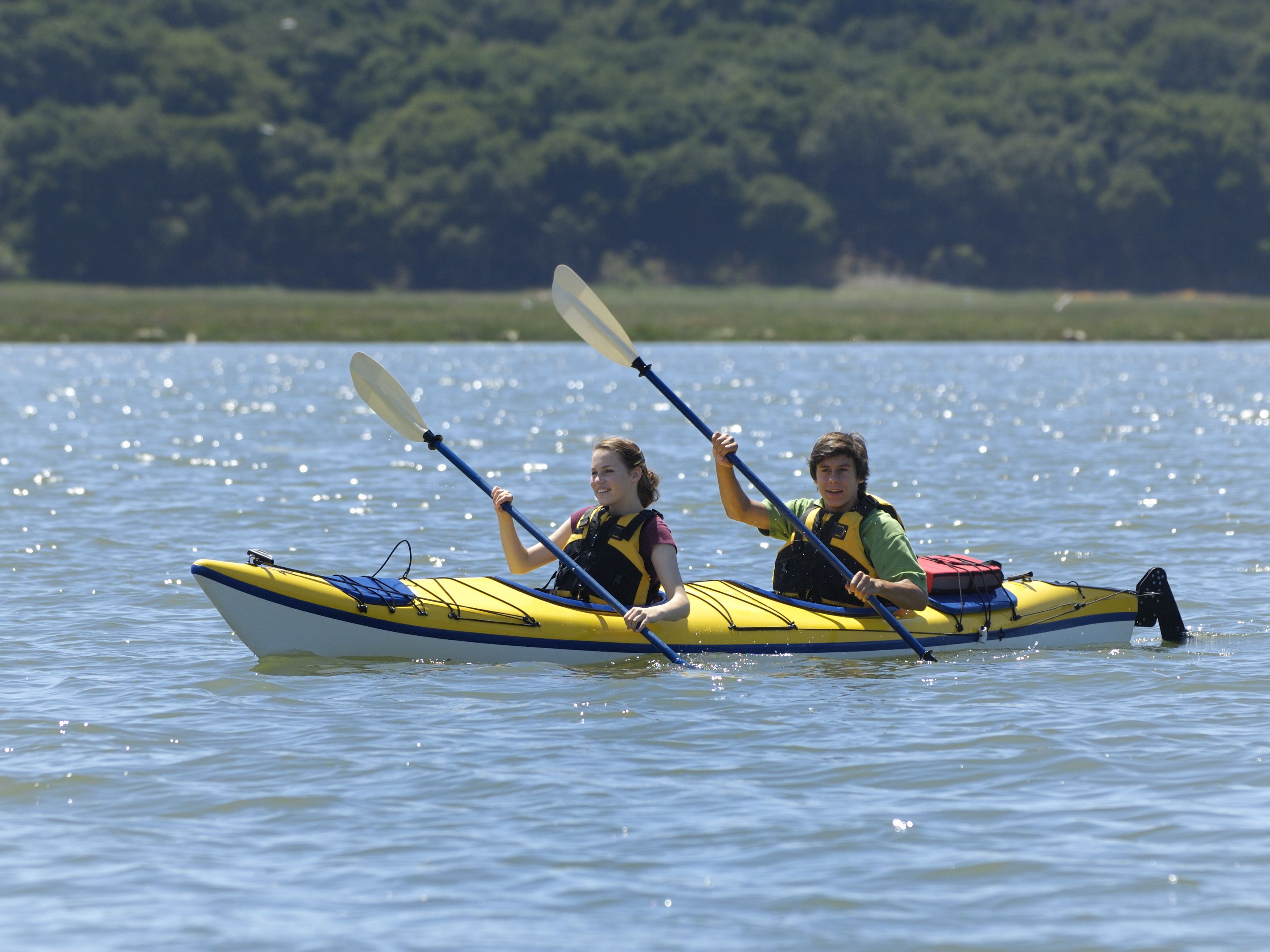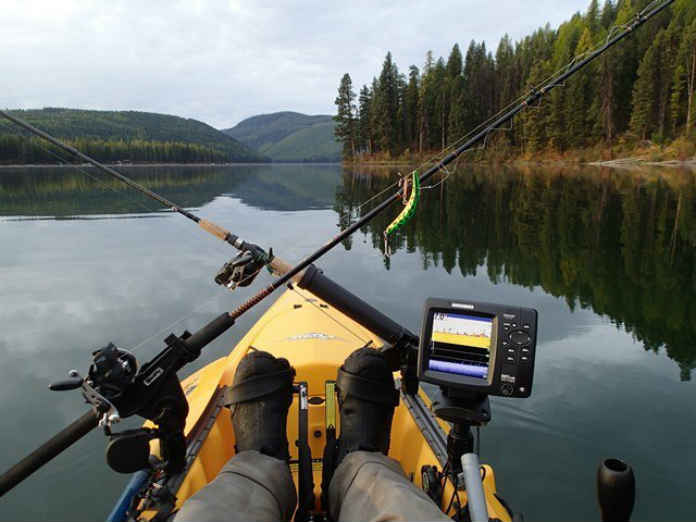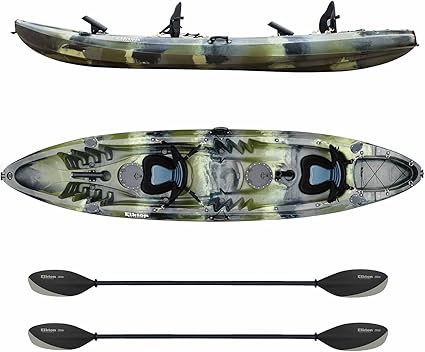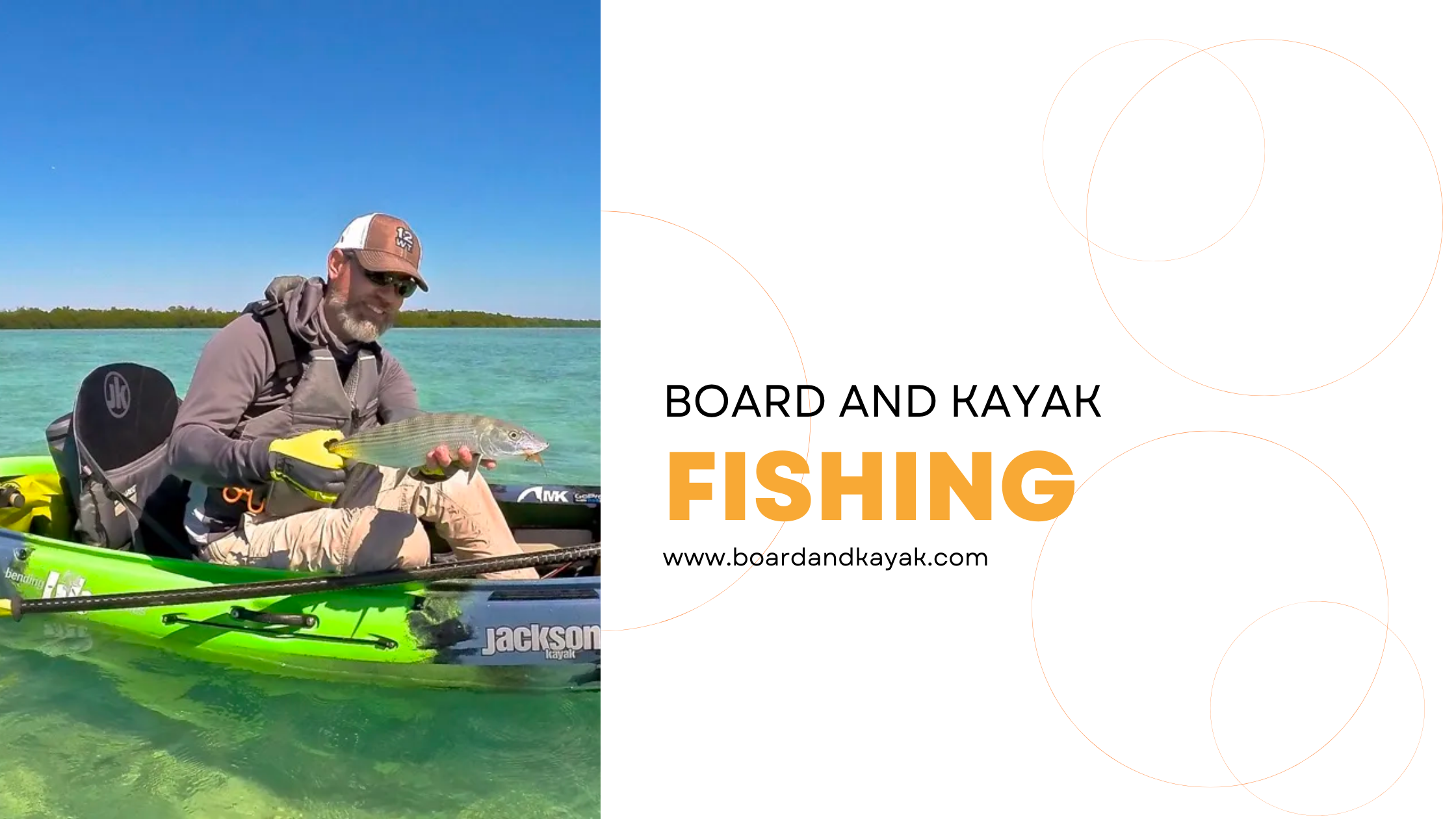
- Alabama
- Alaska
- Arizona
- Arkansas
- California
- Colorado
- Connecticut
- Delaware
- Florida
- Georgia
- Hawaii
- Idaho
- Illinois
- Indiana
- Iowa
- Kansas
- Kentucky
- Louisiana
- Maine
- Maryland
- Massachusetts
- Michigan
- Minnesota
- Mississippi
- Missouri
- Montana
- Nebraska
- Nevada
- New Hampshire
- New Jersey
- New Mexico
- New York
- North Carolina
- North Dakota
- Ohio
- Oklahoma
- Oregon
- Pennsylvania
- Rhode Island
- South Carolina
- South Dakota
- Tennessee
- Texas
- Utah
- Vermont
- Virginia
- Washington
- West Virginia
- Wisconsin
- Wyoming
Kayak Fishing: Pro Anglers' Secrets on Kayak Crappie Fishing
Kayak Fishing
- 1 - A Brief History of Crappie Fishing
- 2 - Benefits
- 3 - What vessel to use?
- 4 - Choosing Your Crappie Tackle
- 5 - Your Secret Weapon: Spider Rigging
- 6 - Tips For Kayak Fishing For Crappies
- 7 - The Most Common Crappie Mistakes
- 8 - Catch And Cook: The Afterparty
- 9 - Myths About Crappie Fishing
- 10 - Natural Facts About Crappies
Kayak fishing for crappie can be a fun and rewarding experience, especially when you have the proper techniques and gear. In this article, we'll explore some tips and tricks for catching crappie from a fishing kayak, as well as the advantages that this method of fishing offers.
A Brief History of Crappie Fishing
Crappie fishing has been popular in North America for centuries, with Native American tribes using various fishing techniques to catch them. The word "crappie" comes from the French word "carpet," which means sunfish. The fish is a paper mouth, speckled, and bachelor perch.
Today, crappie fishing is a popular pastime in the United States, with anglers using various techniques to catch them. While the fish is most commonly seen in the southern and eastern regions of the country, it can be found in waters throughout the United States.
Benefits
Jack mentioned that there are several benefits to using a kayak for fishing, including:
Anytime Access: Jack can easily navigate through tight spaces and shallow waters that may be inaccessible to motorboats. Additionally, kayaks can be launched from any location close to the water. Jack pointed out that while crappie can be found in many bodies of water in New Hampshire, not all have boat ramps. However, modern kayaks offer fewer limitations and can be launched almost anywhere.
Solitude: Kayaks can access waters not often visited by motorboats, providing an opportunity to fish in calm and uncrowded conditions.
Stealth: The low profile of a kayak allows Jack to minimize his the sheer presence and avoid disturbing the water or the fish. In addition, kayaks have a smaller water displacement than boats, which means they can move through shallow waters more efficiently and quietly. Jack stated that the small profile of a kayak is especially useful in the early summer when fish can easily be scared away and in the fall when the wind is less of a factor in staying on top of a school of fish.
kayak crappie
What vessel to use?
Jack typically uses one of two Old Town kayaks, depending on the planned fishing activity for the day. He often fishes from a Predator XL Minn Kota, a 13-foot kayak with a 36-inch beam and a 45-pound thrust Minn Kota trolling motor.
When he wants to paddle, he uses the Predator 13, which is 13 feet 2 inches long and 33 1/2 inches wide. To maximize his fishing time, Jack advises organizing and accessing gear efficiently. He brings multiple rods with different lures and uses rod holders, such as the Scotty rocket launcher, to quickly access his rods.
He also has a crate with a 3-rod holder mounted to it, where he stores plastic tackle boxes filled with his favorite lures. For fishfinding, Jack uses a Sonarphone from Vexilar Inc. This full-color mobile sonar unit transmits the sonar signal to an iOS or Android smartphone or tablet via WiFi. He uses the Vexilar SP200 T-Box and an iPad to view the sonar information. Jack likes the Sonarphone T-Pod because it is affordable, portable, and can be shared with others using the app on their smartphone or tablet.
In addition to fishing gear, Jack also brings tools such as pliers, a camera, a measuring tape, and a stringer or cooler if he plans to keep his catch for dinner.
Choosing Your Crappie Tackle
Fishing Lures And Baits For Crappie
A jig with a trailer is one of the most effective among the many types of lures you can use. It is possible to cast to the brush pile and let the lure sink to the fish's level before retrieving. Another option is to jig the lure vertically; it involves dropping it over the side of your kayak and bouncing or wriggling it to entice a strike.
Color Is Important
When choosing your jig trailer can be overwhelming. Pick the light natural color with a straight tail first, then the curly tail if you're unsure what to get. Choose a darker color in the same patterns after that. When you first start, you should only use these, and then as you become more adept, you can branch out to other colors and sizes.
Fishing With Crankbaits And Live Bait
A crankbait can be very effective during the summer months. The usual assumption is that the fish slow down when the water warms up. You'll trigger a reaction strike when you throw a deep-diving crankbait and allow it to kick up dirt and sand.
Look for crankbaits that can dive 12-20 feet and run them along ledges, flats, and channels. This past structure can also be burned, but be careful not to get snagged because this will result in a lost lure. If you want to use live bait, minnows are the best choice. However, minnows are the preferred prey. You can also use worms and crickets, which work best when suspended under a slip sinker or free-floating.
It is difficult to tell if crappie has bit until you see your bobber moving slowly, so watch your bobber closely.
Other Essentials
Fishing for crappie with a fly rod can be exhilarating, especially when actively seeking food.
Watching the fish attack on the surface when you throw a dragonfly popper is fun. When fish are more likely to be in the shallows looking up in the water column during the spring and summer, this strategy is most effective in the mornings and evenings.
Spinning rods are the best option for those who do not like fly fishing.
With this setup, you can fish with just about any bait. With this, you can cast a small jig and throw smaller, lighter lures. You'll want to use a fluorocarbon line in the 4-6lb range. You can use delicate presentations with this line, which will be so thin that it will be virtually invisible to fish.
When trolling with crankbaits, you should move your line up to a heavier test, typically 8-10 lbs, to get your lure down deeper. Your crankbait will sink deeper with a more severe line.
Your Secret Weapon: Spider Rigging
You may use a couple of rod holders in kayaks to set up spider rigging. Spider rigging is usually done from larger boats. The jerry-rig method is best if you want to quickly cover a lot of water and do so at varying depths or lures. Getting 3-5 rods in the water may require some jerry-rigging. It's perfect for anglers who don't know where crappie school is on small lakes or are unfamiliar with the water.
Tips For Kayak Fishing For Crappies
- Find docks, bridge pilings, and brush piles.
- If you can't scout the lake, you can use a topographic map to locate ledges and drop-offs where fish like to hang out.
- In addition to asking friends who live in the area, you can also contact local tackle shops.
- Sonar will be your best friend if you're not social or prefer to do things independently. Before settling down to fish, be ready to paddle around and mark spots.
- Try changing the color of your lure first before moving on if you have found fish but they aren't biting. Pink jigs or crankbaits can sometimes entice fish when white ones won't.
- Also, you can try out a horsehead jig with a blade. Any lethargic fish will be more likely to strike when they feel extra vibration from the edge.
- You can use this to quickly cover a lot of water and do so at varying depths or lures.
The Most Common Crappie Mistakes
Sitting in one spot too long when fishing for crappie is a common mistake. Your lures have changed a few times, but you still haven't caught anything.
Changing your lures a few times can be beneficial, but if you don't want to leave because you know this spot holds fish, you should move on. If they're not hitting anything, give them a rest and look for a new area. You can always return to that spot later since you know it holds fish.
It is another common mistake not to use a map or sonar to find areas where fish are active, and this often leads to the error of fishing one spot too long. Most of the time, they'll be holding to cover, on ledges, or near drop-offs when you troll a lake looking for crappie. Exploring a lake while spider-rigging your kayak is effective, but even more effective if you dig past places you know fish tend to hold. It's only possible if you have a map or use your electronics.
Spider rigged hobie
Catch And Cook: The Afterparty
Many people still enjoy the great American fish fry during the summer months. Sharing your catch with friends, family, neighbors, or anyone else can improve your day on the water. Even the most inexperienced cook can follow this easy recipe.
- 1lb filets
- 2 cups enriched cornmeal
- ½ cup self-rising flour
- Two teaspoons of cayenne (add or subtract depending on how much heat you like)
- Salt
- Old bay
- Milk
In a bowl, combine the dry ingredients. Dredge the fillets in milk and then cover them with the dry ingredients mixture. Pre-heat the oil to 350 F and drop the filets in. Stir frequently until golden brown. Serve with a side dish of your choice. Serving hushpuppies, slaw, and potato salad would be great.
Myths About Crappie Fishing
Like many fish, crappie fishing has its fair share of myths and misconceptions. Here are a few of the most common:
- Myth: You have to use live bait to catch crappie. While live minnows and other baitfish can be effective, artificial lures like jigs and spinners can also work.
- Myth: Crappies only bite at dawn and dusk. While crappie is often more active during low-light periods, they can be caught throughout the day.
- Myth: You need a boat to catch crappie. While a boat can be helpful, crappie can be seen from shore or by wading in shallow waters.
Natural Facts About Crappies
Crappies are freshwater fish found in lakes, rivers, and ponds throughout the United States. They are known for their distinctive coloring, with a dark green back and lighter sides that can be silver, yellow, or green. Their bodies are compressed, making them look taller than they are wide.
Crappies are schooling fish, often found in large numbers in areas with an underwater structures such as weed beds, submerged trees, or rocky outcroppings. They are opportunistic feeders, eating various small fish, insects, and crustaceans.
While crappie can be caught year-round, they are most commonly seen in the spring and fall when they move into shallow waters to spawn or feed. In the spring, crappie can be found near structures such as pond lilies and dead wood, while in the fall, they tend to form large schools and suspend over basins.
Sit-on-top kayaks are now as effective at catching crappie as johnboats or bass boats. Compared to large motorized vessels, kayaks may even have an advantage. A boat ramp at almost every lake holds crappie, but not all lakes have crappie. It would be best to consider a kayak to kayak crappie fishing anywhere and anytime.
Frequently Asked Questions
What is the best depth for crappie?
Slowly raising the bait through the water can help you locate fish. Fall is the time when crappie moves back to shallower water, but not usually less than 10 feet deep. They often assemble in schools suspended over structures, such as river channels or ridges, during the winter.
What is the best lake to catch crappie?
Kentucky Lake is known for its excellent crappie fishing. Kentucky Lake, a manmade lake covering 160,000 acres, stretches 184 miles in length and 184 miles in width.
When is crappie most active?
During the warmer months, crappie fishing is best after sunrise and an hour before sunset. It is also possible to catch crappie at night during the warmer months. Both black and white crappie prefer midday, when the air temperature is warmest, during the colder months.
Is it possible to catch crappie at night without a light?
The best time to catch crappie is during the morning and evening hours of reduced light. However, night fishing can be hit or miss, based on my experience. It is possible to catch big crappies after dark if you use the right approach, but if you use the wrong approach, you'll only catch mosquitoes.
